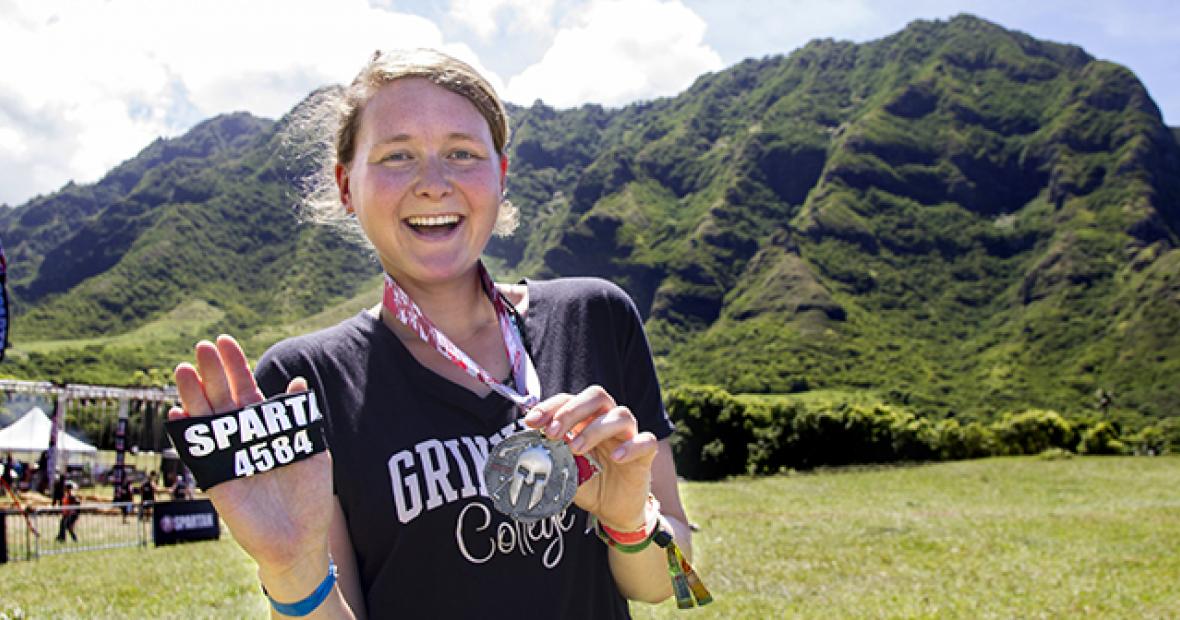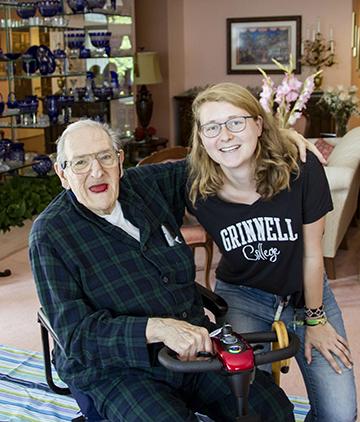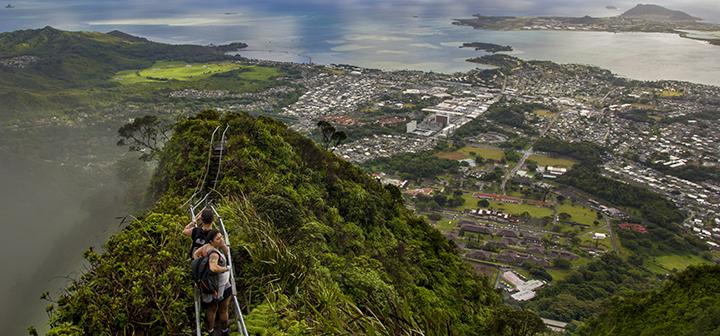Extreme Sports, Extreme Experiences
Since she was a little girl in the Czech Republic, fighting with her brother with sticks and jumping into cold streams, Misha Gelnarova ’18 has been interested in extreme sports.
As a first-year student at Grinnell, she attended the Student Org Fair and remembers one table in particular. “There was a guy sitting with a skateboard on the table and nothing else,” she says. It was the Extreme Society, a student group devoted to extreme sports. So she signed up. During her first fall break, she and a bunch of seniors went to North Carolina to go surfing.
Besides the surfing, she loved the travel. “It was kind of like the typical American road trip,” Gelnarova says. “In Europe if you want to do it, you have to go across nine countries.”
The next year, she became the leader of the Extreme Society and led a trip to Colorado to go hiking. Even though Grinnell is in the middle of the country, the mountains and the oceans are “definitely accessible here,” Gelnarova says. “You can get to it because Grinnell gives you the possibility. It’s one of my favorite parts of Grinnell.”
Travel Fellowship for International Students
Gelnarova has taken advantage of many opportunities at Grinnell, including one specifically for international students — the Fischlowitz Travel Fellowship. The fellowship provides $5,000 to the winning student for travel during the summer or breaks during the school year. Student applicants submit a proposal outlining a theme for their U.S. travel along with specific destinations and a budget. The fellowship is geared toward international students who haven’t had the resources to travel extensively in the United States.
It took Gelnarova three tries over three years before she landed the fellowship, but her persistence paid off. Her theme was, of course, extreme sports.
Exploring Extreme Sports in California, Hawaii
Two things she especially wanted to do with her fellowship travel:
- Attend the Vans U.S. Open of Surfing to see pro athletes surfing, skateboarding, and racing BMX bikes
- Run a Spartan Race — a cross country foot race that involves 20+ obstacles
Gelnarova did both and more. She started with rock climbing in Yosemite National Park in California where she also hiked. “One of the highest elevations was really cool because there were few people, and then the people there were more of the adventurous people,” she says.
She also did stand-up paddle boarding, white water rafting, and sea kayaking.
Before she left California, Gelnarova visited Merle Fischlowitz ’53 in San Diego, the alum who established the fellowship because he enjoyed meeting international students when he was at Grinnell.Near the end of her 16-day adventure, Gelnarova participated in a Spartan Run in Hawaii. The sprint distance is 3–5 miles with multiple obstacles. The course Gelnarova ran started with a short barrier to jump over and then she was neck deep in a river.
Other obstacles included a two-meter high wall to climb and bars like monkey bars to crawl over. “There's one where they give you just a bucket, and you have to fill it with rocks and then you have to walk this crazy trail, or they give you a giant bag with sand that you have to drag,” she says. “Or there's something super heavy and you have to pull it up or pull it down, and if you drop it, then you get the bad points and you have to do burpees, like 30 of them, in between your running.”
She finished the course in an hour and twenty minutes, and despite being soaked at the beginning was totally dry by the end. “I have so many bruises,” she says, smiling. “It was incredible.”
Gelnarova has long wondered why people participate in extreme sports. Isn’t the idea of a vacation to go somewhere peaceful and relax? “It’s this internal satisfaction in the challenge that they’re looking for,” she says.
Global Perspective on Extreme Sports
She’d like to get a global perspective on extreme sports, perhaps through a Watson fellowship. She thinks it would be really different.
“Because I'm coming from the Czech Republic,” Gelnarova says, “when I was in Colorado [before starting at Grinnell], it was such a big shock to see 40-year-old people on a snow board. I have never seen that at home. During the communist time, there was nothing from the West. So you never see anyone above a certain age doing stuff like that.”
Meeting new people and talking to them is also a major part of the experience. “They ask me what I'm doing,” Gelnarova says. She tells them, “I go to this great college in the middle of the corn fields, but I actually got a travel fellowship so I get to do this.”
She continues, “I think that it was really from the reaction of the people that I was telling it to that I realized what a big thing it is. When you're here, you have all these possibilities. There's so much funding and grants and fellowships that you can do. Grinnell is such a special place, just because they will get you anywhere, but it can also bring the world to you.”



